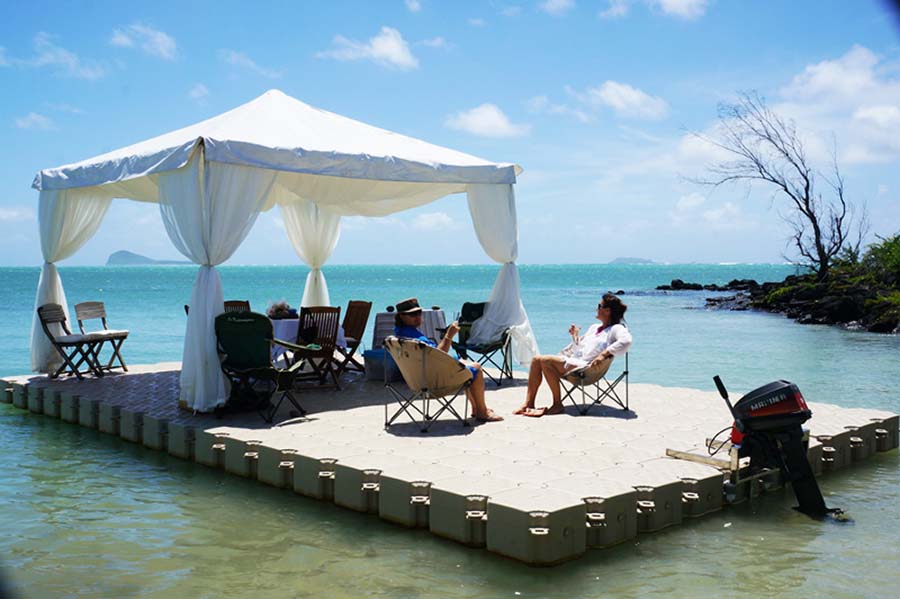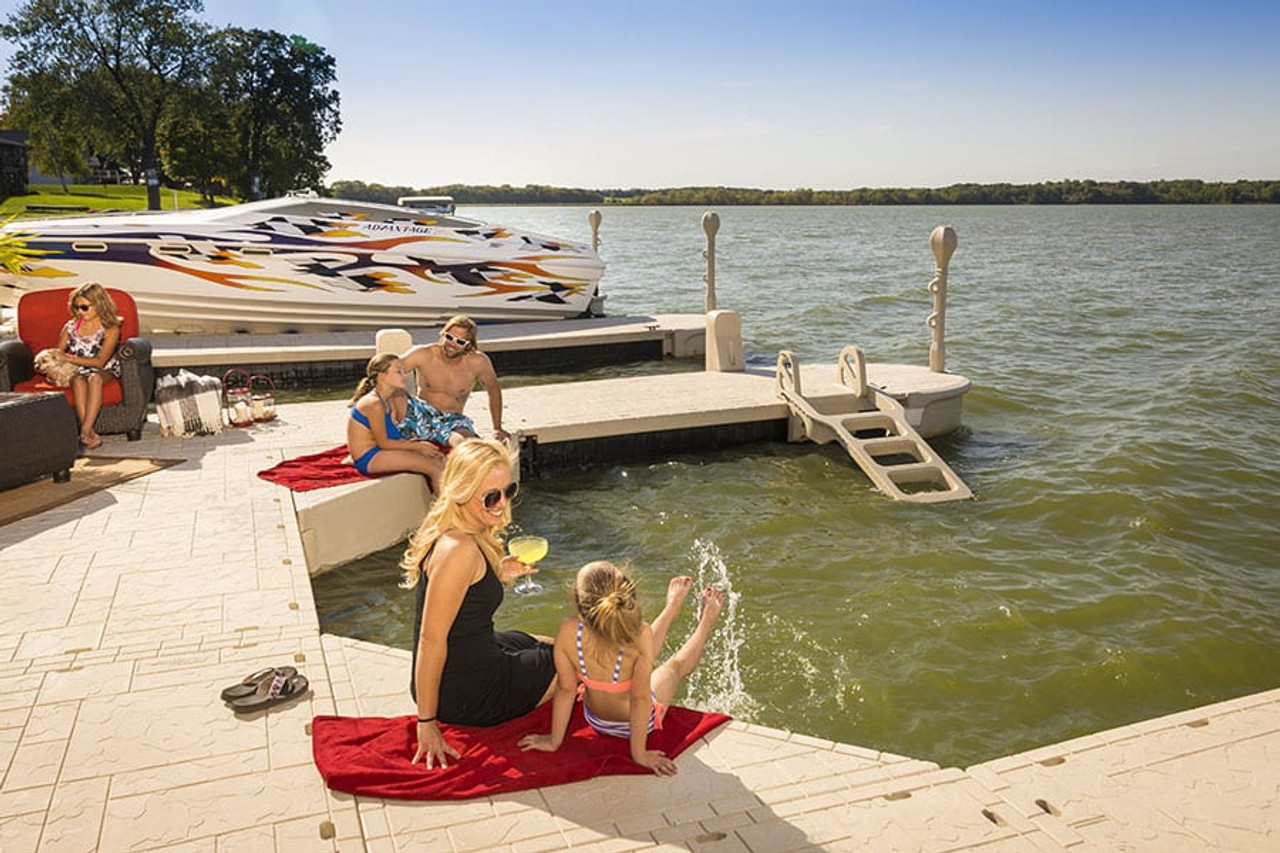Innovative Floating Docks: The Future of Waterfront Gain Access To and Entertainment
Innovative Floating Docks: The Future of Waterfront Gain Access To and Entertainment
Blog Article
Create the Perfect Docking Option With Floating Docks
Floating docks present a flexible solution for a range of maritime requirements, adapting seamlessly to changing water degrees and varied vessel types. Their modular nature permits rapid installation and moving, yet the option of proper products and style functions is crucial for making sure both functionality and visual allure. As we check out the essential elements that add to the performance of floating docks, several crucial factors concerning security and upkeep will certainly arise, questioning about how to enhance your docking experience. The subsequent discussion will certainly illuminate these crucial factors to consider.

Advantages of Floating Docks
Floating docks deal countless benefits that make them a suitable selection for numerous maritime applications. One of the primary benefits is their versatility to transforming water degrees. Unlike repaired docks, floating docks fluctuate with the tide, ensuring regular availability for vessels. This function is particularly vital in locations susceptible to considerable tidal changes or seasonal water level modifications.
Additionally, floating docks are commonly much easier and quicker to set up compared to traditional set structures. Their modular style permits straightforward setting up and disassembly, facilitating maintenance and moving when needed. This adaptability is specifically useful for temporary applications or in atmospheres where conditions might transform.
Floating docks likewise have a tendency to be more environmentally pleasant, as they lessen interruption to the seabed and surrounding marine ecosystems. Their resilient nature decreases the threat of damages to marine life, advertising a much healthier atmosphere. These docks can be customized to fit various vessel sizes, ensuring that they satisfy particular operational demands.
Ultimately, the combination of adaptability, ease of setup, and environmental factors to consider makes floating docks a very effective remedy for a vast array of maritime needs.
Choosing the Right Materials
Selecting the ideal products for floating docks is crucial to make sure security, longevity, and long life. The selection of materials directly affects the dock's efficiency in various environmental conditions, including exposure to water, sunlight, and prospective wear from marine traffic.
Usual materials made use of for floating docks consist of light weight aluminum, wood, and high-density polyethylene (HDPE) Aluminum is light-weight, corrosion-resistant, and requires marginal maintenance, making it an exceptional choice for durability. However, its first expense can be higher compared to other materials.
Wood, while visually enticing and supplying a standard look, can be prone to rot and pest damage otherwise effectively treated. Using pressure-treated timber or normally resilient species like cedar or redwood can mitigate these issues.
HDPE is a preferred option as a result of its resistance to UV rays and chemicals, together with being eco-friendly. floating dock company. It is light-weight and offered in different shades, enabling for personalization
Eventually, the right product choice will certainly depend on specific needs, consisting of budget plan, wanted aesthetics, and environmental considerations. Mindful examination of these elements will cause a effective and resistant floating dock remedy.
Layout Considerations for Security
When making floating docks, ensuring security is an essential element that can significantly impact their capability and safety and security. Security in floating dock layout is influenced by numerous elements, including buoyancy, weight distribution, and the arrangement of elements.
Weight circulation is essential; equally distributing loads throughout the dock avoids turning and boosts stability. Larger designs can use raised security, especially in harsh water problems, while longer docks may call for extra supports to protect against drooping.
Another essential consideration is the environmental effect, including wave action and wind. Incorporating features such as sidewalls or skirting can assist reduce the effects of environmental pressures, maintaining security in adverse problems. Eventually, a mix of view it now thoughtful design, material selection, and understanding of ecological elements will certainly yield a drifting dock that meets both security and safety and security requirements.
Installment Tips and Techniques

Following, protect the necessary licenses and follow neighborhood regulations, which might dictate installation approaches and ecological considerations. If required, engage a certified specialist experienced in floating dock installments. Use top notch materials developed for aquatic environments to boost resilience and long life.
When placing the dock, align it identical to the coastline to promote easy access. Guarantee that the anchoring system is robust, utilizing concrete blocks or helical anchors to maintain the dock against wind and wave activity. It's essential to account for seasonal water degree variations, including prospective ice motion in chillier environments.
Throughout the setup, verify the dock's floatation and stability before wrapping up the anchoring. On a regular basis examine the installment for any type of signs of wear or damage. By following these suggestions and methods, you can accomplish a secure, functional, and cosmetically pleasing floating dock installment that meets your requirements.
Maintenance and Care Standards
Caring and maintaining for floating docks is crucial to extending their life-span and ensuring safe usage. Routine examinations should be conducted to determine any type of indicators of wear, damages, or marine development. Look for splits, loosened installations, or tarnished locations on the dock's surface, as these problems can find more jeopardize architectural stability.
Cleaning is important. Utilize a pressure washer to eliminate algae, barnacles, and debris, which can collect gradually. For persistent development, think about eco-friendly cleaner that won't hurt aquatic life.
In addition, check the mooring lines and supports regularly to guarantee they are cost-free and safe and secure from deterioration. Change any type of frayed or damaged lines promptly to keep security.
During extreme climate, such as tornados or freezing conditions, take precautionary steps. Secure the dock with added mooring lines and, if viable, eliminate any type of detachable parts to protect against damages.
Final Thought
In final thought, the execution of floating docks offers a efficient and functional docking solution ideal for various maritime applications. With appropriate installment and routine upkeep, floating docks can supply effective and trustworthy docking experiences for a wide variety of vessels.
As we discover the important aspects that add to the performance of floating docks, several crucial variables regarding stability and upkeep will certainly arise, raising questions regarding just how to maximize your docking experience. Unlike fixed docks, floating docks increase and fall with the tide, making their explanation sure regular accessibility for vessels.When designing floating docks, guaranteeing stability is an essential facet that can dramatically affect their functionality and safety. Stability in floating dock design is influenced by different aspects, consisting of buoyancy, weight circulation, and the arrangement of parts. Ultimately, a combination of thoughtful layout, product option, and understanding of ecological variables will certainly generate a drifting dock that satisfies both security and security demands.
Report this page